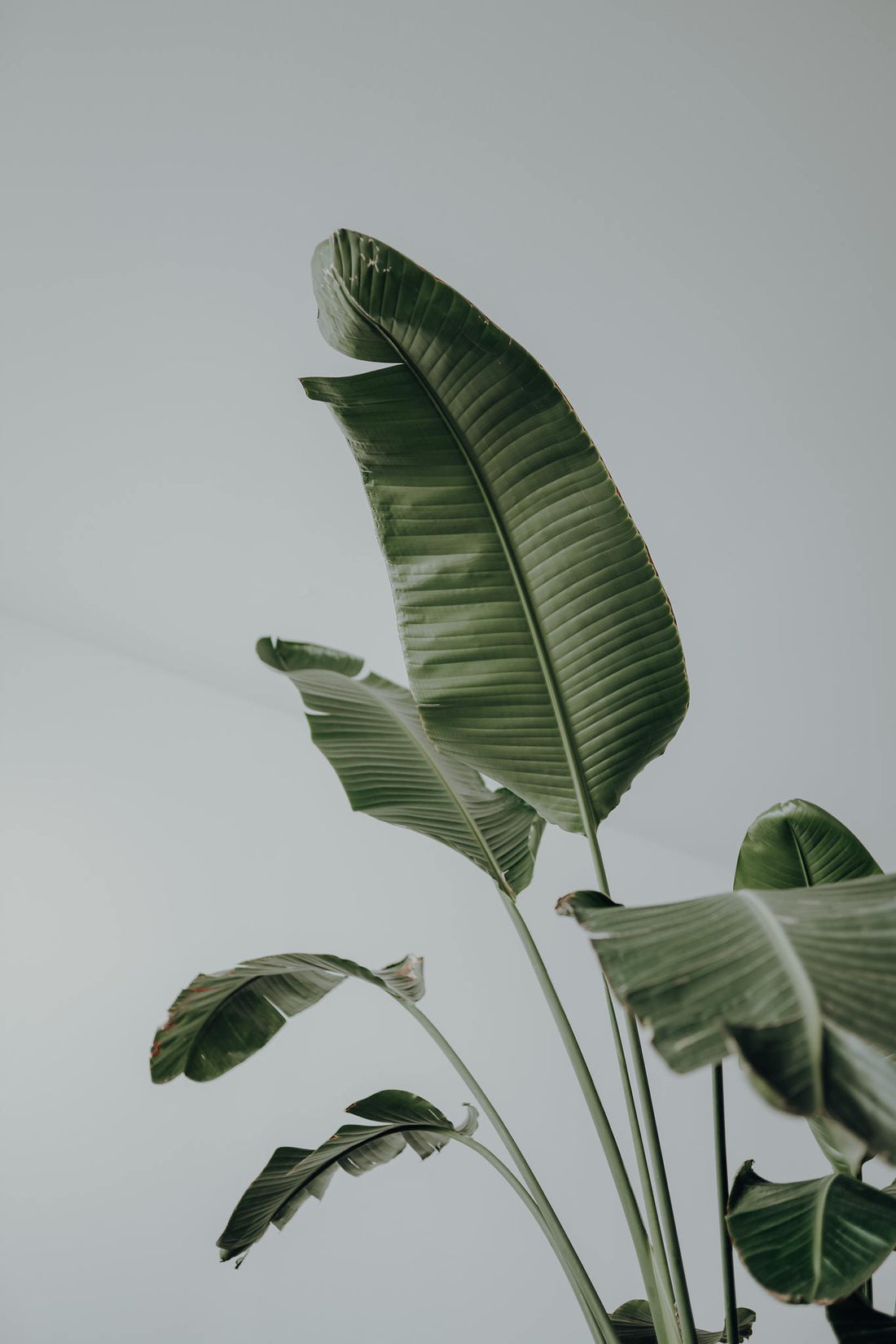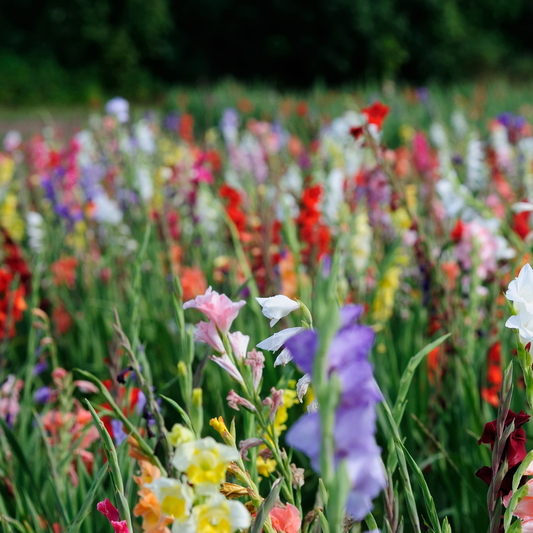
Caring for the Bird of Paradise Plant (Strelitzia)
Share
The bird of paradise plant (or Strelitzia Nicolai) is one of the most iconic houseplants out there. With its large, bold leaves and showy flowers, it’s easy to see why this plant is so popular. But if you’re new to caring for bird of paradise plants, you might not know where to start. That’s where this guide can come in handy!
In this blog, we’ll explain everything you need to know about caring for the Bird of Paradise plant. From potting and watering tips to dealing with pests and diseases. So whether you’re a novice or a seasoned green thumb, read on for all the information you need to create a beautiful (and healthy) display of the Bird of Paradise plant in your home!

Here is a short summary:
- The best way to water a Bird of Paradise plant is to not let the soil dry out completely between waterings.
- Protect the Bird of Paradise Plant from frost and cold weather
- Make sure he gets enough sunlight - at least 6 hours a day
- Prune away dead or damaged leaves regularly
- Repot the Bird of Paradise plant when the roots emerge from the bottom of the growing pot
- Fertilizing is possible, but not necessary (and be careful with it)
Strelitzia General
The genus Strelitzia, also known as cranesbill flowers or bird of paradise plants, belongs to the plant family Strelitziaceae. The most well-known species is the orange-blue bird of paradise (Strelitzia reginae), which is native to South Africa. These perennials are known for their large, colorful flowers, which resemble the head of a tropical bird.
The genus is named after the Duchy of Mecklenburg-Strelitz, the birthplace of Queen Charlotte of the United Kingdom. There are five species in total, all of which are native to southern Africa. The plants in this genus are usually found near streams or in wetter habitats than most other members of the Strelitziaceae family.
All species are characterized by evergreen leaves and an inflorescence with three sepals and three petals arranged in a particular way. The fruit of the Bird of Paradise plant is a dry capsule that splits open to release black seeds covered in a bright orange pulp.

Strelitzia Species
The Strelitzias (Bird of Paradise Plant) that you will find with us are the following:
- Strelitzia Reginae
- Strelitzia Nicolai
- Strelitzia Augusta
Should you still be looking for another species of the Bird of Paradise plant, you can always contact us. We can order almost any plant in the world from growers worldwide. You can contact us via email or social media.
What is the difference between the Strelitzia Reginae, the Nicolai and the Augusta?

Although they are very similar in appearance, there are some important differences between the two varieties, especially regarding the leaves.
The Nicolai is distinguished by having broader, more flexible leaves that have a lighter color. In contrast, the Reginae has narrower, stiffer leaves that are more upward-facing and a very typical orange-purple flower.
In terms of growth, the Nicolai generally grows faster than the Augusta, but the latter has the potential to eventually become larger.
As for the flowers, the Augusta has white flowers with a hint of purple, while the Nicolai has flowers that are a combination of white, blue and red.
Location for the Strelitzia: sunlight

The Strelitzia is a beautiful tropical plant that originates from South Africa. The most well-known species is the Strelitzia reginae, or bird of paradise flower. This species is characterized by its vibrant orange and blue flowers, which resemble the plume of a tropical bird. In its natural environment, the Strelitzia grows in warm, sunny places. Are you still looking for plants for the sun?
The plant requires full sun to partial shade to thrive. Although the Bird of Paradise tolerates most soil types, it prefers well-draining soil that is rich in organic matter. We recommend this potting soil for the strelitzia .
When growing the Bird of Paradise plant indoors, it should be placed near a window where it will receive plenty of bright, indirect sunlight. With proper care, the Bird of Paradise plant will be beautiful and enjoyable for years to come.
Watering the Bird of Paradise Plant
The frequency with which you water your Bird of Paradise plant depends on a number of factors, including the size of the plant and the pot it is in. For example, a small Strelitzia in a 10cm pot will need to be watered more often than a large Strelitzia in a 25cm pot. As a general rule of thumb, you should water your Bird of Paradise plant once a week, allowing the soil to dry out slightly between waterings.
As for when to water, early morning or evening are usually the best times, as this helps prevent evaporation. However, if you live in an area with high humidity, you may need to water less often. Here are some tips to increase humidity.
If you notice that the leaves of the Bird of Paradise plant are drooping, this is a sign that it needs water. Check the soil before watering, as overwatering can also be harmful to your plant. Learn more about watering the strelitzia.
The ideal temperature for a Strelitzia
The flowering of the Strelitzia Reginae is stimulated during a cool winter period, when the temperatures are around 10 degrees. It is important to let the root ball dry out completely several times during the winter. In the spring, the plant needs a lot of nutrition, warmth and light to thrive.
Unlike other houseplants that usually bloom in the spring, the Strelitzia only blooms in the fall. This is because the flowers of the Strelitzia are very large and therefore need more time to fully open. Because of this, the Strelitzia is known as a "late bloomer", which only shows its beautiful flowers later in the year.
Is the Strelitzia poisonous?
Yes, Strelitzia can be harmful to children, dogs, cats or other pets. Consuming a large amount of Strelitzia can cause mild toxicity in humans, dogs, cats or other pets. Ingestion of leaves, flowers or seeds can lead to symptoms such as dizziness, vomiting, diarrhea and drowsiness.
How fast does the bird of paradise plant grow?
Common Situations
My Strelitzia is getting yellow leaves
Strelitzia is a relatively low maintenance plant, but it does require some care to ensure it stays healthy. A common problem with Strelitzia is yellow or brown leaves.
This can be caused by a number of factors, including too much sunlight, not enough watering, or a lack of nutrients. If you notice that your Bird of Paradise plant has yellow or brown leaves, take a close look at the plant to try to determine the source of the problem. Once you have determined the cause, you can take steps to correct the problem and get your Bird of Paradise plant back to its best.
The leaves of my Bird of Paradise plant are curling up
Although Strelitzias are most commonly found in warm, humid climates, they can also tolerate drought conditions. However, the leaves curl up in low humidity. If you live in an area with low humidity, you can help your Bird of Paradise plant by misting the leaves regularly or placing the pot on a tray of pebbles. With a little extra care, you can enjoy the beauty of this exotic plant in your home.
Torn leaves on my Strelitzia
The leaves of the Bird of Paradise plant tear naturally. The plant grows on the windy African beaches and as a precaution it tears its leaves so that the wind can pass through. If it did not do this, the stem would break off.
Don't you think that's pretty? Then be über careful and keep the plant out of the draft or wind and keep it moist. Also, walking against the plant can cause it to tear.
My Strelitzia leaves are hanging limp
If you notice that the leaves of your Strelitzia are drooping, this has to do with how much water you are giving it. The leaves that are drooping are a sign that the Strelitzia is not getting enough water. So check the soil carefully to know when to water it. Make sure that you do not give it too much water because this can also be harmful to your plant.
The roots come out from under the pot
You may have noticed that your Strelitzia's roots are coming out of its pot. This is usually a sign that the plant has outgrown its pot and needs to be repotted. The best time to repot your Bird of Paradise plant is in the spring, just before the plant begins its active growth period.
When choosing a new pot, make sure it is only slightly larger than the old pot. Use well-draining potting soil and water the plant well after repotting. With a little care, your Bird of Paradise plant will soon look like new again.
You can also cut your Strelitzia to have less roots in your pot.
My Strelitzia is not producing flowers
The Bird of Paradise plant flowers are among the most beautiful and unusual flowers in the world. Native to South Africa, these flowers are most commonly known as bird-of-paradise flowers. They get their name from their resemblance to the exotic birds found in tropical forests.
The flowers are large and brightly colored, with long petals that curve back like a bird’s wings. They usually bloom in shades of orange, yellow, and blue. Bird of Paradise plant flowers are not only beautiful, but they also last a long time. The blooms can last for several weeks, making them a popular choice as a cut flower. If you’re looking for a unique and eye-catching flower, look no further than the strelitzia flower.
Unfortunately, you can only expect flowering at the Reginae. The Nicolai or Augusta, almost never flower.
Well, that's it!
Still have questions? Send us an email or a DM via our socials! (@deplantrekkers)




